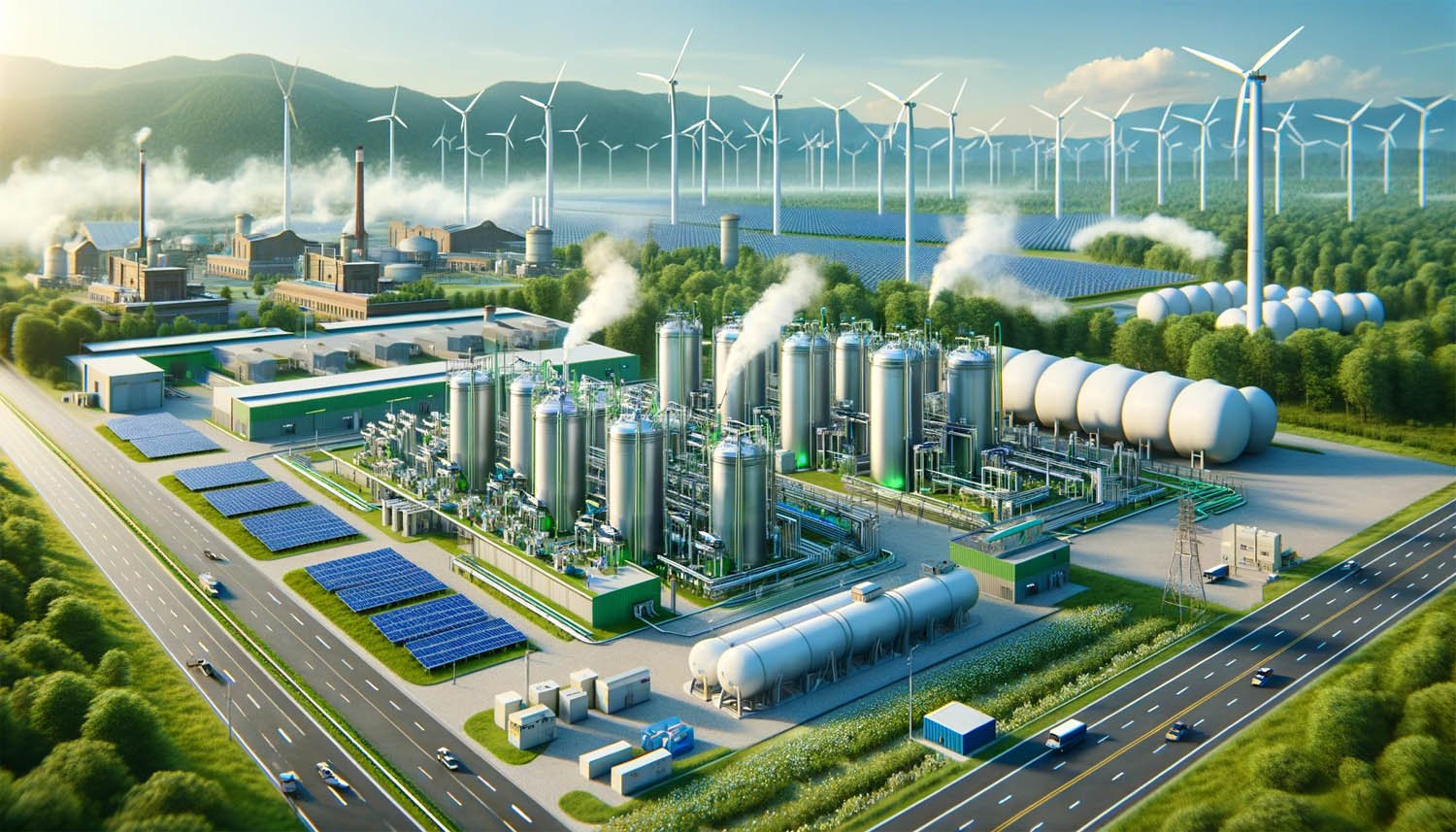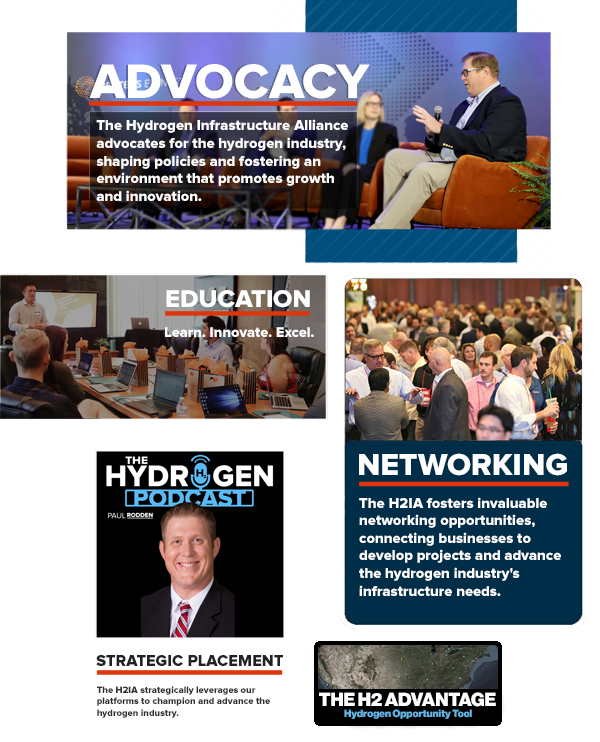As the world intensifies its efforts to combat climate change and transition to clean energy sources, hydrogen has emerged as a versatile and promising energy carrier. Among the various methods of hydrogen production, the electrolysis of water stands out as a clean and potentially renewable process. This article provides an in-depth exploration of water electrolysis for hydrogen production, its current state, challenges, and future prospects.
The Hydrogen Infrastructure Alliance recognizes the critical role of electrolysis in the broader hydrogen production landscape. As we delve into this topic, we’ll examine the technical aspects, economic considerations, and environmental implications of this key technology in the clean energy transition.
Fundamentals of Water Electrolysis
A. Basic Principles and Chemical Reactions
Electrolysis of water is an electrochemical process that uses electricity to split water molecules into hydrogen and oxygen. The basic reaction can be represented as:
2H₂O → 2H₂ + O₂
This process occurs in an electrolyzer, where water is decomposed into its constituent elements at the electrodes when an electric current is applied.
B. Components of an Electrolyzer
A typical electrolyzer consists of the following main components:
- Anode: Where oxygen is produced
- Cathode: Where hydrogen is produced
- Electrolyte: Conducts ions between the electrodes
- Power supply: Provides the necessary electrical energy
- Separation system: Collects and purifies the produced gases
C. Types of Electrolysis Systems
- Alkaline Electrolysis
- Uses a liquid alkaline electrolyte (usually potassium hydroxide)
- Well-established technology with lower capital costs
- Operating temperature: 60-80°C
- Efficiency: 60-70%
- Proton Exchange Membrane (PEM) Electrolysis
- Uses a solid polymer electrolyte
- Higher efficiency and ability to operate at high current densities
- Operating temperature: 50-80°C
- Efficiency: 65-80%
- Solid Oxide Electrolysis Cells (SOEC)
- Operates at high temperatures (700-850°C)
- Highest electrical efficiency among electrolysis methods
- Still in development stage for large-scale applications
- Potential efficiency: up to 90%
Efficiency and Energy Requirements
A. Theoretical Energy Requirements
The theoretical minimum energy required for water electrolysis is 237.2 kJ/mol of H₂ at standard temperature and pressure. This corresponds to a voltage of 1.23 V across the electrolyzer.
B. Practical Efficiency Considerations
In practice, the energy requirement is higher due to various inefficiencies:
- Overpotentials at electrodes
- Ohmic losses in the electrolyte and circuitry
- Gas crossover and recombination losses
C. Comparison of Different Electrolysis Technologies
| Technology | Efficiency | RangeEnergy Consumption (kWh/kg H₂) |
| Alkaline | 60-70% | 50-60 |
| PEM | 65-80% | 50-80 |
| SOEC | Up to 90% | 40-50 (projected) |
Green Hydrogen Production
A. Integration with Renewable Energy Sources
The environmental benefits of electrolysis are maximized when coupled with renewable energy sources such as solar, wind, or hydroelectric power. This combination produces “green hydrogen,” which has zero carbon emissions throughout its production cycle.
B. Benefits of Green Hydrogen
- Zero-emission fuel when used in fuel cells
- Versatile energy carrier for various sectors
- Enables long-term energy storage
- Facilitates decarbonization of hard-to-abate sectors
C. Challenges and Opportunities
- Intermittency of renewable energy sources
- Need for large-scale energy storage
- Potential for grid balancing and stability
Economic Aspects
A. Current Costs of Electrolysis
As of 2024, the cost of hydrogen production via electrolysis ranges from $3-8 per kg, depending on factors such as electricity prices, capital costs, and utilization rates.
B. Cost Reduction Trajectories
Several factors are driving down the cost of electrolytic hydrogen:
- Economies of scale in electrolyzer manufacturing
- Technological improvements increasing efficiency
- Declining costs of renewable electricity
Projections suggest that green hydrogen could reach cost parity with fossil fuel-based hydrogen in many regions by 2030.
C. Comparison with Other Hydrogen Production Methods
While currently more expensive than steam methane reforming (SMR), electrolysis is becoming increasingly competitive, especially when considering the full life-cycle costs and environmental impacts.
Technological Advancements
A. Improved Catalysts and Materials
Research is ongoing to develop:
- More efficient and durable electrode materials
- Low-cost alternatives to precious metal catalysts
- Advanced membranes for PEM electrolyzers
B. System Design Optimizations
Innovations in system design are focusing on:
- Improved heat management
- Enhanced gas separation techniques
- Modular and scalable designs for easier deployment
C. Scaling Up Production Capacity
Efforts are underway to increase the size and capacity of electrolyzers:
- Current largest systems: 10-20 MW
- Near-term targets: 100+ MW systems
- Long-term vision: GW-scale hydrogen production plants
Applications and Market Potential
A. Industrial Uses
- Ammonia production
- Oil refining
- Steel manufacturing
B. Transportation Sector
- Fuel cell electric vehicles (FCEVs)
- Heavy-duty trucks and buses
- Maritime and aviation applications
C. Energy Storage and Grid Balancing
- Long-duration energy storage
- Seasonal energy balancing
- Power-to-gas applications
Environmental Impact
A. Carbon Footprint Reduction
When powered by renewable energy, electrolysis can significantly reduce the carbon footprint of hydrogen production compared to fossil fuel-based methods.
B. Water Consumption Considerations
While water is the primary feedstock, the overall water consumption of electrolysis is relatively low:
- Approximately 9 kg of water per 1 kg of hydrogen produced
- Potential for using seawater or wastewater as feedstock
C. Life Cycle Assessment
A comprehensive life cycle assessment shows that green hydrogen from electrolysis has significantly lower environmental impacts across various categories compared to fossil fuel-based hydrogen.
Policy and Regulatory Landscape
A. Government Support and Incentives
- Research and development funding
- Tax incentives for green hydrogen production
- Mandates for low-carbon hydrogen in industry
B. Standards and Certifications
- Development of international standards for green hydrogen
- Certification schemes to verify the origin and carbon intensity of hydrogen
C. International Cooperation
- Cross-border hydrogen trade initiatives
- Joint research and development programs
- Harmonization of regulations and standards
Future Outlook and Challenges
A. Research and Development Priorities
- Improving electrolyzer efficiency and durability
- Developing novel materials for high-temperature electrolysis
- Integrating electrolyzers with renewable energy systems
B. Infrastructure Development
- Expanding hydrogen production, storage, and distribution networks
- Developing large-scale underground hydrogen storage
- Creating hydrogen refueling infrastructure for transportation
C. Market Growth Projections
- Global electrolyzer capacity expected to reach 100 GW by 2030
- Green hydrogen to play a significant role in meeting climate targets by 2050
- Potential for electrolysis to capture 20-40% of the global hydrogen market by 2050
The electrolysis of water for hydrogen production represents a cornerstone technology in the transition to a clean energy future. As we’ve explored in this comprehensive overview, electrolysis offers a clean, versatile, and increasingly economical method of producing hydrogen without direct carbon emissions.
The rapid advancements in electrolyzer technology, coupled with the declining costs of renewable energy, are paving the way for green hydrogen to play a pivotal role in decarbonizing various sectors of the global economy. From industrial processes to transportation and energy storage, the applications of electrolytic hydrogen are vast and growing.
However, challenges remain in scaling up production, reducing costs further, and developing the necessary infrastructure. Overcoming these hurdles will require continued investment in research and development, supportive policy frameworks, and international cooperation.
The Hydrogen Infrastructure Alliance is committed to supporting the growth and development of electrolysis technology as a key component of a sustainable hydrogen economy. By fostering innovation, facilitating knowledge sharing, and advocating for supportive policies, we aim to accelerate the adoption of clean hydrogen solutions worldwide.
As we look to the future, the electrolysis of water for hydrogen production stands as a beacon of hope in our collective efforts to create a more sustainable and resilient energy system. The journey towards a hydrogen-powered future is well underway, and electrolysis will undoubtedly play a central role in shaping this clean energy landscape.



